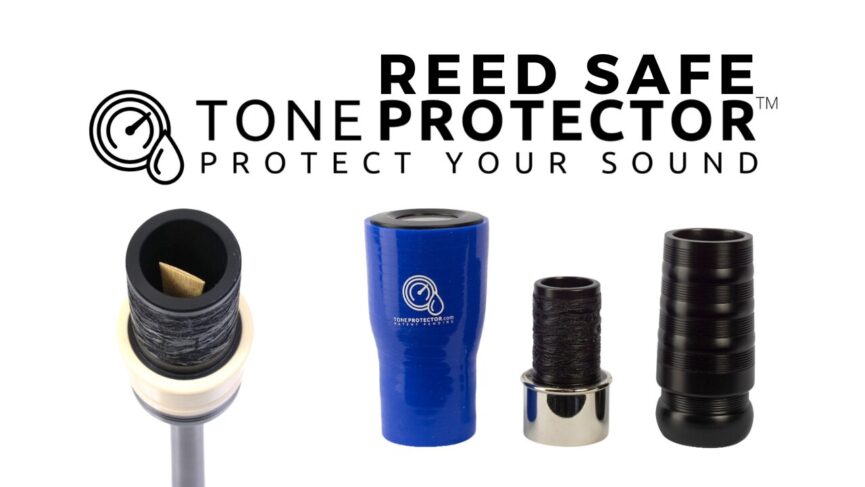
AS FEATURED IN

Protect your Sound: What Every Piper Needs to Know about Moisture, Humidity, and Bagpipe Reeds
by Jori Chisholm, Founder of BagpipeLessons.com
Last Updated: April 11, 2025
Video Transcript: Today we’re going to talk about your bagpipe sound and how everything about how your pipes sound and feel is affected by the humidity in the air around you. We’ll take a deep dive into how humidity affects your reeds and how controlling the moisture in your reeds is the single most important and powerful thing you can do to improve the quality, consistency, and stability of your sound. Doing this one thing will make your pipes easier to play, easier to tune, and help you sound great inside, outside in any weather conditions, in any season anywhere in the world. And you can speed up the break-in process for your reeds and save money, time, and hassle by extending the life of your reeds. Join me as we unravel the mysteries surrounding your bagpipe sound and discover a game changing solution that will skyrocket the quality of your tone and increase the enjoyment you get from your playing. You’re about to discover something that will make you fall in love with your bagpipes all over again. So stick around and welcome to BagpipeLessons.com where you’ll find the inspiration and knowledge to fulfill your piping dreams. Let’s get straight to the point.
The Impact of Moisture on Bagpipe Sound
How your pipes sound and feel is the cornerstone of your musical experience whether you’re a top competitor, or just getting onto the pipes. The magic happens when your pipes sound full, rich, and resonant and they feel amazing to play. We’ve all experienced the pain, frustration, and agony when our pipes don’t sound right, won’t stay in tune, and feel hard to play. You know how hard it is to enjoy listening to someone playing the pipes if the instrument is out of tune. No matter how great the fingering or the expression, or the tune selection, it’s really hard to get past that bad bagpipe sound. But on the flip side, when we hear a sweet steady perfectly tuned bagpipe, we love it. We really really love it. And that’s one of the great joys of piping: to experience that sound coming out of your own instrument. If you’re like me, you love to play and you spend a lot of time and energy to get your pipe sounding great. It’s soul crushing to have what could have been a great performance ruined by pipes that won’t stay in tune or are hard to play.
Cane Reeds are Highly Sensitive to Moisture Content
In my three plus decade of experience as a piper teacher and competitor around the world, I’ve discovered a simple yet profound truth: cane chanter reeds are incredibly sensitive to moisture. The moisture content in the reed affects virtually every aspect of its performance from its overall strength and efficiency, to the quality of the sound it produces. Volume, pitch, tuning, stability, tonal richness, and even how the reed changes over time are all influenced by moisture content.
The Evolution and Science of Cane Reeds
To fully grasp why bagpipe reeds behave the way they do with moisture, we have to start with the source material: cane. Most bagpipe reeds are made from Arundo donax, a giant cane native to the Mediterranean. Cane is an amazing material with a unique blend of strength and flexibility. The cane’s fiber structure is made of cellulose and lignan enables it to vibrate well while being sturdy enough to handle the pressures of playing.
This balance delivers the warm, full, rich sound we crave. The reed sound comes from its cellular composition and gives a unique tone based on its density, stiffness, and moisture content. Cane reeds are hygroscopic: meaning they absorb moisture. Moisture gives the fibers flexibility and allows the reed to create a more resonant sound. The fibers in the reed expand and contract as the moisture content in the reed fluctuates, causing changes in both the physical dimensions and the sound of the reed.
Why Reeds Are Unstable in Real-World Conditions
We pipers invest an enormous amount of time, money, and effort into selecting the best reeds. Breaking them in and setting them up for optimal performance. But despite all this meticulous preparation even the best pipers can find it challenging to maintain a consistent warm and rich sound from day-to-day. Why? The issue isn’t just that your reeds are affected by the moisture from your breath, the real issue is humidity.
Your reeds are massively impacted by where you store the reeds when you’re not playing them and the moisture content in that air that surrounds them, regardless of how often you play your pipes. Most of the time your reeds are sitting there waiting for you, and the humidity of the air where you store your reeds is the single most important factor that determines how your reeds are going to perform when you’re ready to play.
What is Humidity and How Does It Affect Your Reeds
So what exactly is humidity? Simply put, it’s the water vapor in the air, and it’s constantly changing. It varies depending on lots of elements like location, elevation, time of day, the local weather, and whether the ground is wet from rain or dry.
These fluctuations are particularly problematic for cane reeds because they’re hygroscopic, they’re constantly absorbing moisture from the air and releasing moisture back into the air. And that’s a problem: any change in the humidity has an immediate impact, throwing your reeds and performance into disarray.
Pipers Around the World Play in Diverse Climates
The bagpipes are Scotland’s most famous musical export but you can find pipers in every region of the world today, including places where the weather and climate are hostile to your reeds and can change radically throughout the year. Talk to a piper from the American West, Australia, or the Canadian prairies, and you’ll hear how hard it can be to get a great bagpipe sound from the intense dryness of the air. And it’s not just from the heat of the summer. Even in winter when the coldness sucks the moisture right out of the air, and it’s even drier inside from the constant indoor heating.
Dryness Kills Your Reeds
One year at Winter Storm in Kansas City I brought a digital hygrometer to measure the humidity in the air. Winter in the midwest can be pretty harsh: not only cold but dry. Any guesses how dry? 13%! That level of dryness sucks every little bit of moisture out of your reed in an instant. Dryness is a reed’s enemy. It alters the reed’s tone, makes it hard to tune, and can even lead to damage like cracking. Dry reeds not only sound thin but also have a shorter lifespan. When you go to play, you’re introducing huge amounts of moisture into the reed so it takes a longer time before things settle down and stabilize.
Old School Techniques (Licking and Pinching)
For years I followed the advice of old-school pipers who lick and pinch their reeds before playing. If your reed is bone dry, you don’t really have any other option. But this leads to its own set of problems. This moisture shocks the dry reed and destabilizes it at precisely the time you want it to be stable and consistent. Licking and pinching makes the reed less stable to blowing pressure and shortens the life of the reed. I only realized this fully when I finally stopped licking and pinching my reeds.
My Quest for a Better Solution: Stabilizing the Humidity Around Your Reed
As a piper who’s played, competed, and taught pipers in diverse climates and conditions around the world, I’ve always been on a quest for something to improve the stability of my reeds: give them a warmer, richer sound and make them last longer. I wanted my reeds to always be ready to go even if I didn’t play them every day. I needed to reduce the tuning time, speed up the break in process, and find something that was simple yet effective.
The key to a perfectly tuned, efficient, and great sounding bagpipe is stability. And most importantly you need a consistent level of moisture in your reeds. This discovery is what led me to develop a solution that’s exceeded even my own high expectations and revolutionized the way pipers think about their sound.
Introducing the Tone Protector™ Chanter Cap and Reed Case
It’s the Tone Protector and the Tone Protector Reed Case with Two-Way Humidity Control Technology and a Digital Display. These products precisely manage the humidity level where your reeds are stored. This ensures your reeds are always ready to perform consistently no matter where you are in the world, no matter what the weather’s like, or how the seasons change.
The Tone Protector helps you achieve a consistent sound with unparalleled stability. You can enjoy the same consistent great sound during every performance and your reeds will always sound great when it really counts. You’ll spend less time warming up and tuning and more time actually playing. And your sound remains consistent regardless of the fluctuating weather and seasonal changes. The Tone Protector allows you to focus on your music by freeing up your time from constant reed adjustments so you can walk into any performance or competition with confidence knowing exactly what to expect from your instrument.
Your reeds will last three to four times longer, saving you money and reducing hassles. You’ll never have to lick or pinch a reed ever again.
How the Tone Protector’s Two-Way Humidity Control Works
Just place your reeds inside the Tone Protector Reed Case and the controlled humidity environment begins working its magic. A digital display gives you peace of mind. The stabilization process starts the moment you start using the Tone Protector and you’ll notice an improvement in your sound immediately. The humidity control technology works two ways: the Tone Protector will add or remove moisture as needed to keep your reeds exactly where they need to be, ready to go right out of the box when you’re ready to play.
Real-World Success Stories with the Tone Protector
The Tone Protector and Tone Protector Reed Case are designed to help every kind of piper, whether you’re a top competitor aiming for the pinnacle of excellence, or a pipe band member who’s looking for consistent sound from week to week, or a casual piper just looking to maintain a quality sound with minimal hassles.
The Tone Protector has you covered. It’s also perfect if you have more than one chanter and reed going at one time, or if you travel with your pipes to places with different types of conditions. Every piper can benefit from protecting their reeds from challenging weather conditions, and everybody wants to save money, so you’ll appreciate reeds that last longer.
The Tone Protector and Tone Protector Reed Case let you focus on what matters most: enjoying playing your bagpipes. But don’t just take my word for it. I’ve spoken to a famous pipe major of a top band who hand-selects reeds for his players and sets them up in their pipe chanter for his out of town players. He caps the chanter with a Tone Protector Chanter Cap and puts additional reeds safely stored in a Tone Protector Reed Case so they arrive anywhere in the world in perfect condition ready to go.
Tone Protector Wins Awards from Pipes|Drums
Pipes|Drums, the world’s most respected source for bagpipe news and reviews named the Tone Protector Chanter Cap Runner-Up Product of the Decade and the Tone Protector Reed Case was named Product of the Year. The panel of expert reviewers said: “the Tone Protector Reed Case is a game-changer,” “Takes the guesswork out of managing and storing reeds,” and they’d never “Seen a product catch on so completely and widely, “It should improve reed storage for pipers everywhere,” “Another innovation that makes the piper’s job easier and more predictable, “Deals directly with the physics of the instrument.”
Choosing the Tone Protector and Tone Protector Reed Case means investing in a meticulously designed and rigorously tested solution that meets the unique needs of pipers of all skill levels in any climate.
Your 100% Satisfaction is Guaranteed!
It’s built by pipers for pipers and I stand behind it with an ironclad 100% satisfaction guarantee. Whether you’re a beginner seeking to make your pipes more stable and easier to tune, or an advanced player seeking a richer tone and greater precision, the Tone Protector is your ticket to a more fulfilling piping experience wherever you go in the world and whenever you play.
The Tone Protector is there to make sure your reeds are always ready to go when you’re ready to play. So what are you waiting for?
Get Your Tone Protector Today!
Take your bagpipe performance and piping satisfaction to the next level, visit BagpipeLessons.com/ToneProtector to explore more information, view photos, videos and take the next step towards revolutionizing your piping experience.
Save Big with the Tone Protector Ultimate Bundle
Save big on the Tone Protector Chanter Cap and Reed Case and my other exclusive and best-selling products with the Tone Protector Ultimate Bundle. You get the Tone Protector Reed Case with storage for up to 15 reeds, the Tone Protector Chanter Cap, the Bagpipe Gauge (your go-to tool for precision blowing skill), the Piper’s Ultimate Reed Poker (a specialized tool to extend the life of your reeds), and the Piper’s Advantage Bagpipe Phone Mount (unleash the power of your favorite smartphone apps with your pipes.)
Subscribe to the BagpipeLessons.com YouTube Channel
Check out the detailed videos on the BagpipeLessons.com YouTube channel and please subscribe and hit the bell icon to stay updated when I add new videos. And check out BagpipeLessons.com/shop for the entire range of Tone Protector products and all of my other popular and award-winning tools to help you enjoy your piping more. And download my free guide: How to get a World-Class Bagpipe Sound, the link is in the description below. For more videos, lessons, and free guides be sure to visit BagpipeLessons.com/Learn.
Until next time, happy piping!





